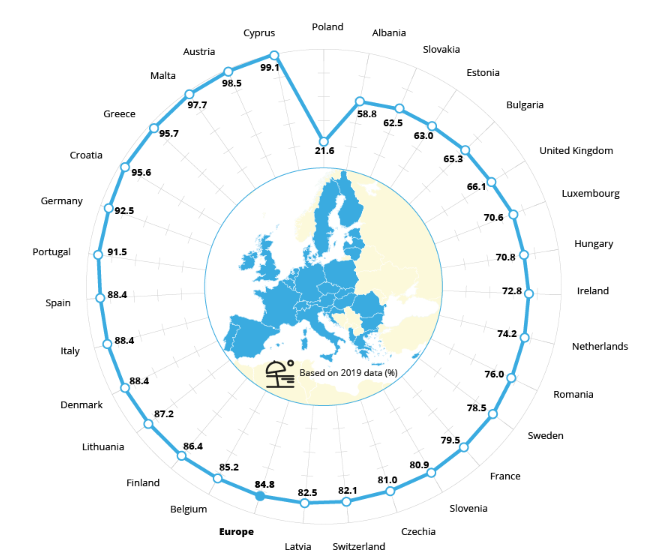Quality of Europe’s bathing waters remains high, latest EEA annual assessment finds
- June 9, 2020
- Posted by: Elaine Coles
- Category: Environmental, Water Issues, Europe

The quality of Europe’s bathing water remains high, according to this year’s European bathing water quality assessment published today by the European Environment Agency.
Just under 85 % of swimming sites across Europe monitored in 2019 met the European Union’s highest and most stringent ‘excellent’ quality standards.
The results published by the European Environment Agency (EEA) and the European Commission give a good indication where swimmers can find the best quality bathing waters. However, due to the coronavirus outbreak and restrictive measures put in place across Europe, members of the public are advised to seek updated information from local and national authorities and beach operators about safety measures at bathing sites.
Hans Bruyninckx, EEA Executive Director, said:
“Regular monitoring and assessment of bathing water are essential for ensuring that we maintain the already very high quality across Europe and, where needed, we take effective measures to address water pollution. Cleaner bathing waters do not only benefit our own health and well-being but also the health of the environment.”
Almost all of the 22,295 bathing water sites monitored last year across Europe (of which 21,981 were in the then 28 Member State EU including the United Kingdom) met the minimum quality requirements according to the briefing.
Albania and Switzerland also monitored and reported on the quality of their bathing water sites and their data are included in the assessment.
Specific results showed only minor drops in sites meeting the highest ‘excellent’ standards, and the minimum ‘sufficient’ quality requirements set out in the EU’s Bathing Water Directive. ‘Excellent’ quality bathing water sites across Europe stood at 85 %. Those meeting the least minimum ‘sufficient’ standing stood at 95 %. The briefing also found that the quality of coastal swimming sites is better than those located inland.
The number of overall ‘poor’ rated sites stood at 1.3 % of all sites monitored in Europe last year. That figure has not fluctuated much since 2013, when the figure stood at 2 %, reflecting the long-term improvements in bathing water quality in Europe.
Alongside this year’s report, the EEA has also released an updated interactive map showing the performance of each bathing site. Updated country reports are also available, as well as more information on the implementation of the directive in countries.
The Commission intends to launch an evaluation of the EU Bathing Water Directive, which has now been in place for 40 years, in the coming weeks with the intention to analyse what has worked and not. On that basis, the Commission will decide whether additional initiatives should be taken to improve the functioning of the directive.
Virginijus Sinkevičius, Commissioner in charge of the Environment, Fisheries and Oceans, commented:
“Clean bathing water is usually taken as something that is gifted, but it’s actually one of the European collective achievements. It’s the result of hard work by many people over many years. This year’s report once again confirms that European citizens can continue to enjoy very high quality standards when bathing in European waters and all measures must be taken to continue along this path.”
Click here for more information about EU bathing water quality
